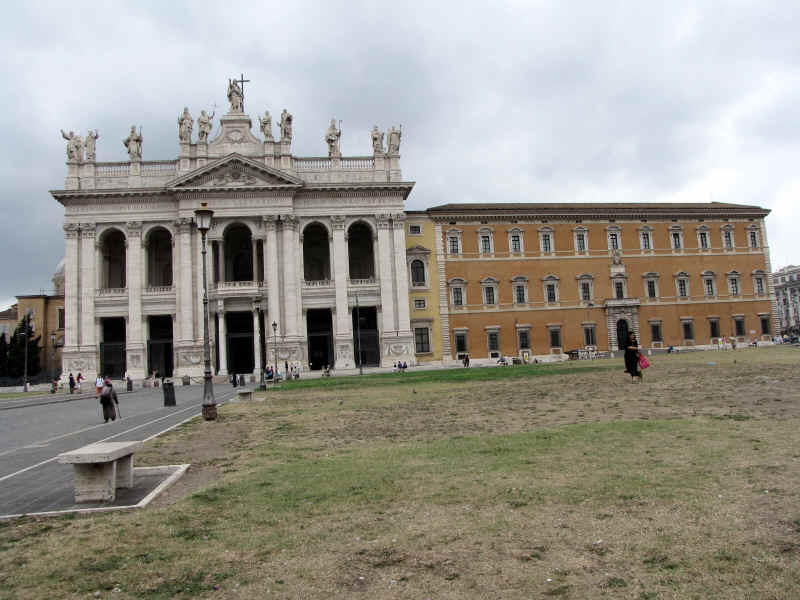

| The Basilica of St. John Lateran outranks all of the other basilica of Rome (including St. Peter's) and is the Cathedral of Rome. It was built on the orders of Emperor Constantine and consecrated on November 9, 318 AD. For many centuries, it and the adjoining Lateran Palace, were the Holy See of the Catholic Church. Like all the other major basilicas in Rome and much other property, it has an extraterritorial status to Italy and belongs to the City State of the Vatican. |
 |
| The facade of the basilica from Piazza di Porta San Giovanni. A portion of the Lateran Palace is appended on the right. |
 |
|
|
|
|
|
|
 |
|
|
|
|
 |
|
|
|
|
|
|
|
| One of the most noteworthy artistic treasures of the basilica is a set of 12 larger-than-life-sized statues on the columns of the nave toward the apse. The statues were created after 1703 by various sculptors and portray the apostles of Jesus. The choice of sculptors was made on the basis of a competition sponsored by Pope Clement XI to pick the best design for each. To view the pictures of these works, click here. A link at the bottom of that auxiliary page will return you to this point. |
|
|
|
|
|
|
|
|
|
|
|
 |